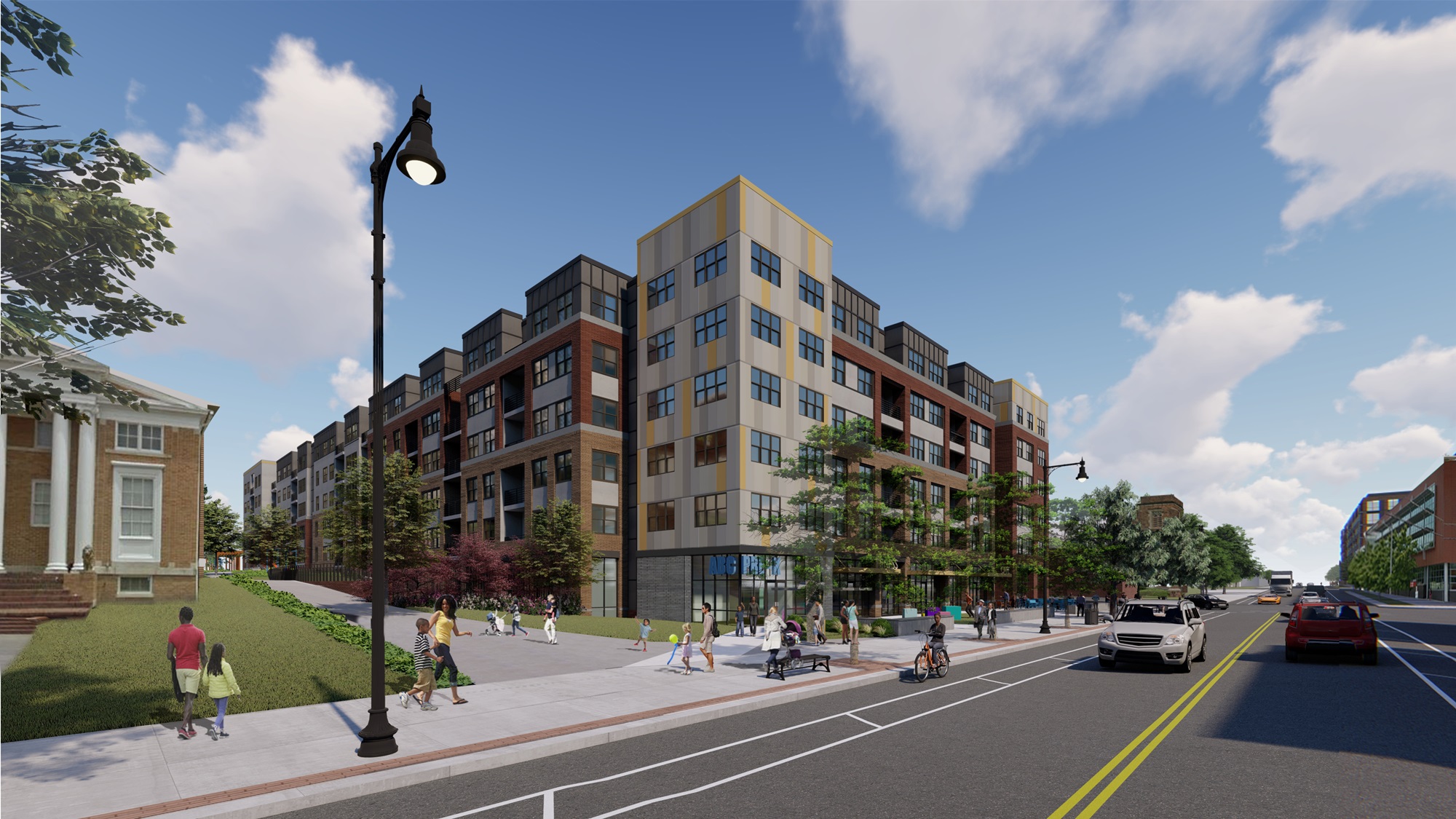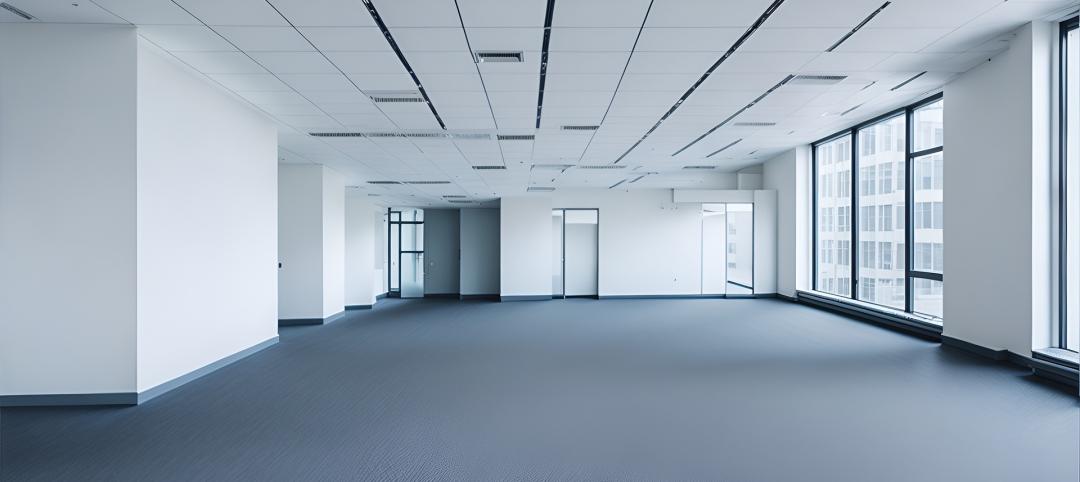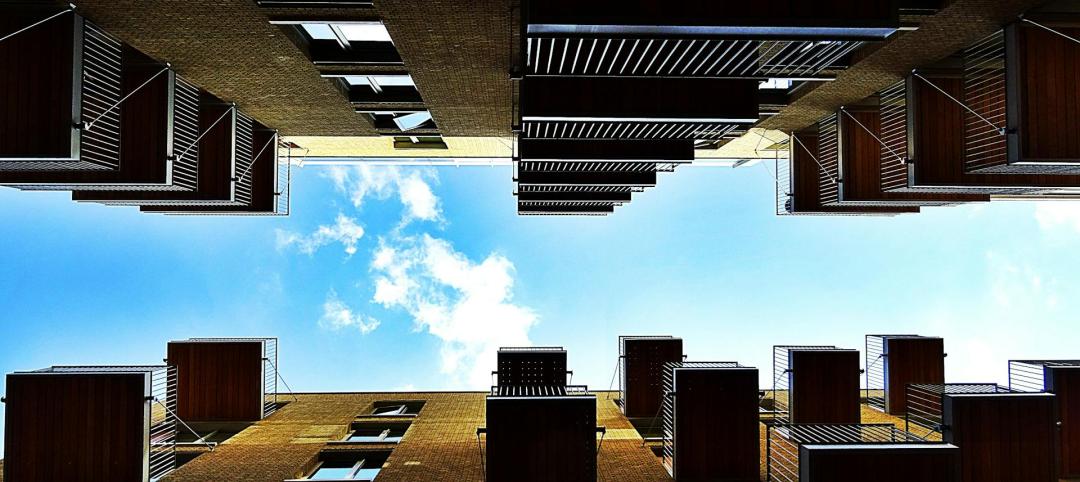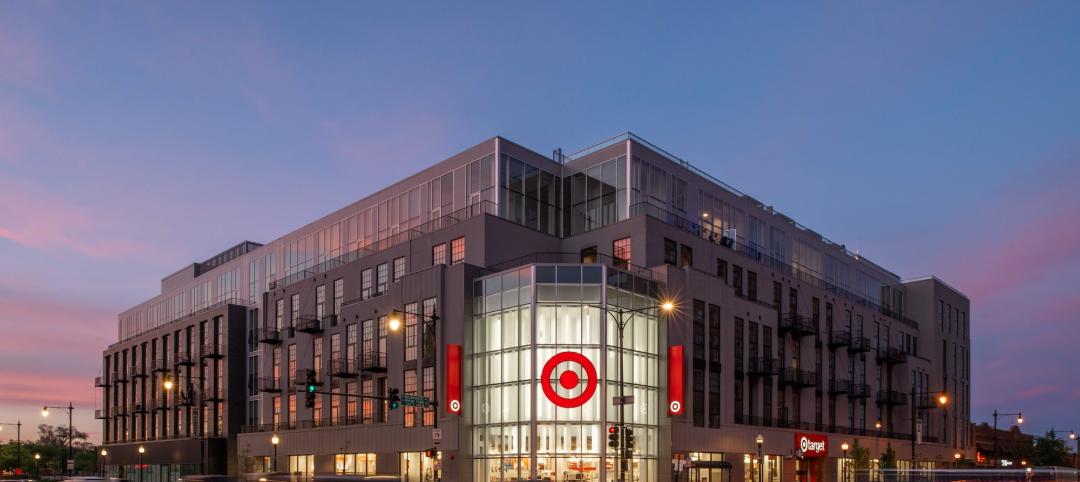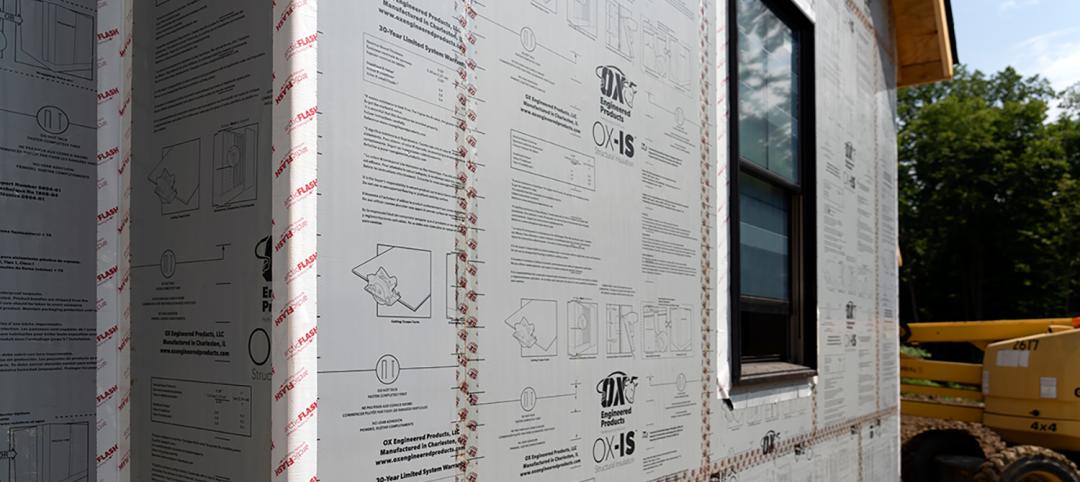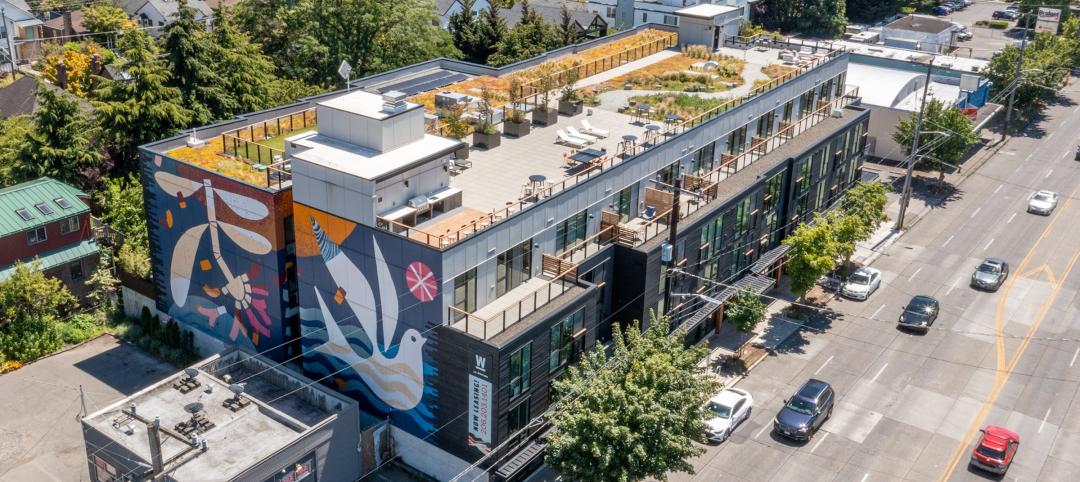In Durham, North Carolina, Laurel Street Residential planned the build of two Type III multifamily units that stood six stories high. Ian Shelton, a project manager for Neighboring Concepts, partnered with Progress Carolina and UFP Construction to frame the structure with ProWood FR fire-retardant wall assemblies. Ian spoke to the goals that were set for this project:
“The 300 East Main affordable housing project is a collaborative effort between the development team and Durham County to provide affordable living in the heart of downtown Durham... In addition to residential units, the ground floor of the housing component includes indoor and outdoor amenities as well as provisions for a future childcare space intended to serve the local community…”
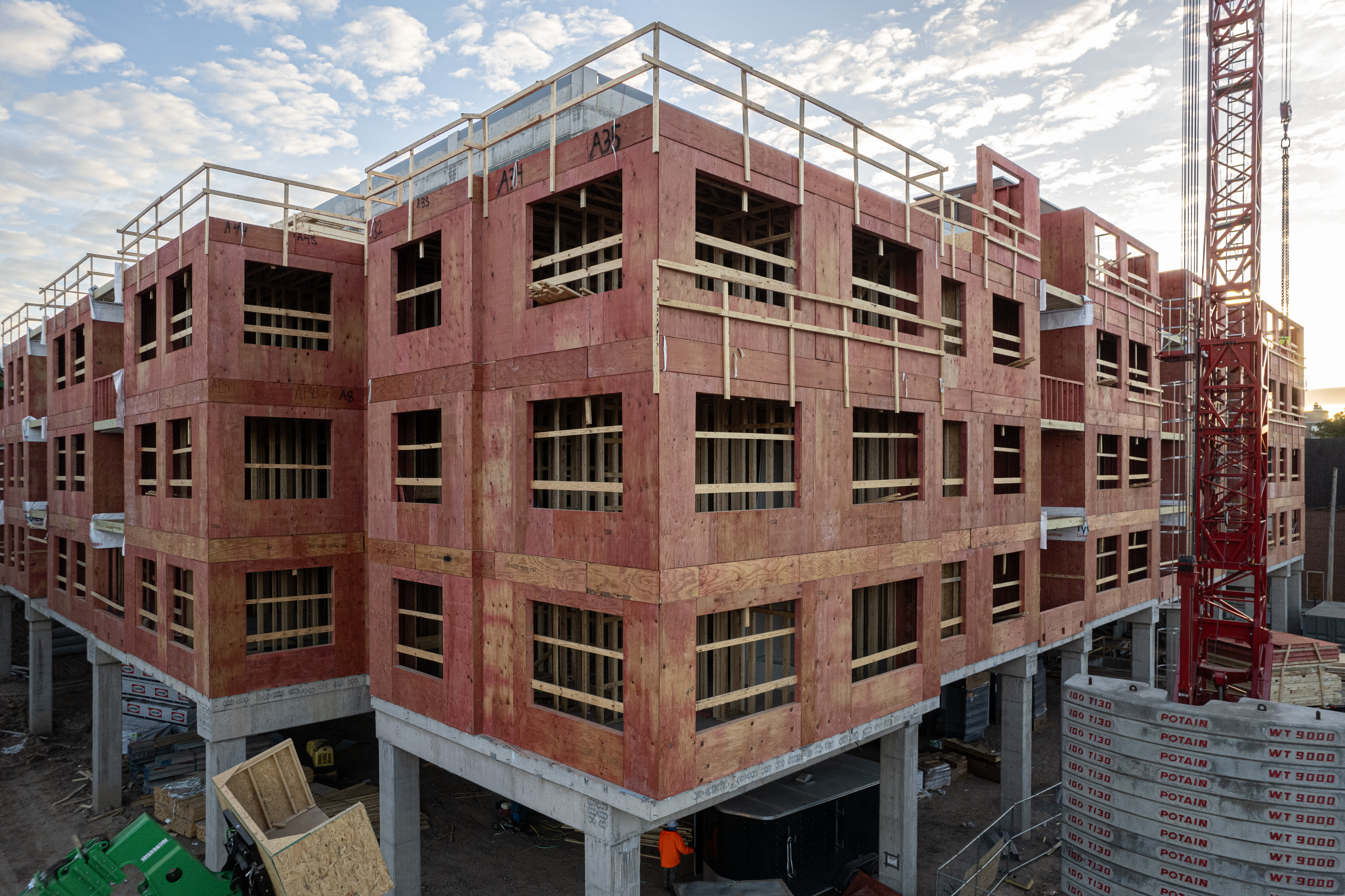
Why ProWood FR?
ProWood FR fire-retardant treated products for Type III construction projects are an affordable option compared to other noncombustible materials, benefiting the economy in the area. Ian Shelton noted, “Type III construction allowed us to maximize the number of housing units on a tight urban site while meeting the projects budget constraints [and it] met the non-combustibility requirements of the building code for Type III construction while providing a more cost-effective alternative to metal stud framing.”
ProWood FR products are highly acclaimed in the industry, having received several awards, including Building Design + Construction Top Products. These reliable products are widely available and backed by a 50-year warranty. As detailed in the ICC Evaluation Services, Inc. ESR-4373, ProWood FR products meet all major model building code requirements. Additionally, they are UL-Classified with an FR-S Rating, ensuring flame spread and smoke development values of 25 or less.

ProWood FR Product Offering
BACKER BLOCK
These pre-cut blocks are used to support the installation of interior cabinets, vanities, shelving, grab rails, trim and more. And because they’re made from ProWood FR pressure-treated dimensional lumber, the holding strength is much greater than plywood.
DIMENSIONAL LUMBER and SHEATHING
ProWood FR fire-retardant-treated wood has a Class A Flame Spread Index of 25 or less, the best rating for fire-retardant building products. Flame spread rating was achieved through the ASTM E84 30-minute test. ProWood FR pressure-treated lumber and plywood have also been tested by independent accredited laboratories, following industry standards ASTM D5564 and ASTM D5516, to develop strength design factors for various use conditions.

1-HOUR WALL PANEL
ASTM E119 Tested, the 1-hour wall assembly is load bearing rated from one side (interior side only). For details refer to ESR Report 4373.
2-HOUR WALL PANEL
The code-compliant ProWood FR V343 2-hour wall assembly is manufactured under the independent third-party inspection of Underwriters Laboratories Inc. (UL), the largest and oldest independent testing laboratory in the United States. This wall assembly is fully code-compliant and meets the highest available standard, carrying UL’s FR-S designation.
The use of ProWood FR fire-retardant treated products in the construction of the two 6-story multifamily units in Durham, North Carolina, has proven to be a strategic and beneficial choice for Laurel Street Residential and its partners. By opting for ProWood FR, the project successfully met the stringent fire safety requirements while remaining within budget constraints, thereby maximizing the number of affordable housing units in a densely populated urban area. The collaboration between the project team and Durham County has resulted in a housing initiative that not only addresses the need for affordable living spaces but also provides valuable community amenities, ensuring a positive and lasting impact on downtown Durham.
Related Stories
Adaptive Reuse | Aug 29, 2024
More than 1.2 billion sf of office space have strong potential for residential conversion
More than 1.2 billion sf of U.S. office space—14.8% of the nation’s total—have strong potential for conversion to residential use, according to real estate software and services firm Yardi. Yardi’s new Conversion Feasibility Index scores office buildings on their suitability for multifamily conversion.
Adaptive Reuse | Aug 28, 2024
Cities in Washington State will offer tax breaks for office-to-residential conversions
A law passed earlier this year by the Washington State Legislature allows developers to defer sales and use taxes if they convert existing structures, including office buildings, into affordable housing.
Architects | Aug 28, 2024
KTGY acquires residential high-rise specialist GDA Architects
KTGY, an award-winning design firm focused on architecture, interior design, branded environments and urban design, announced that it has acquired GDA Architects, a Dallas-based architectural firm specializing in high rise residential, hospitality and industrial design.
Affordable Housing | Aug 27, 2024
Not gaining community support is key barrier to more affordable housing projects
In a recent survey, builders and planners cited difficulty in generating community support as a key challenge to getting more affordable housing projects built. The survey by coUrbanize found that 94% of respondents tried to gain community input and support through public meetings, but many were frustrated by low attendance. Few respondents thought the process was productive.
Mixed-Use | Aug 21, 2024
Adaptive reuse of a Sears store becomes luxury mixed-use housing
6 Corners Lofts at 4714 W Irving Park Road, Chicago, Ill., opened in March of 2024 as a 394,000-sf adaptive reuse project born out of a former Sears store.
Multifamily Housing | Aug 21, 2024
Nation's leading multifamily developer expands into infrastructure
Greystar's strategy for infrastructure is driven by the shifting landscape of today's cities—primarily in the increased digitization, urbanization, and transitions to clean energy.
MFPRO+ New Projects | Aug 20, 2024
Seattle workforce housing project inspired by geology of eastern Washington
J.G. Whittier Apartments, a workforce housing project in Seattle uses the geology of eastern Washington as inspiration for the design. The architecture and interior design celebrate geometric anomalies found in nature. At the corners of the building, blackened wood siding “erodes” to expose vibrant murals underneath.
MFPRO+ New Projects | Aug 16, 2024
At 60 stories, the Paramount multifamily development will stand as Nashville’s tallest high rise
When complete, the 60-story Paramount building, at 750 feet high, will be the tallest high rise tower in Nashville, Tenn., surpassing the city’s current record holder, the 617-foot AT&T Building. The $390 million Paramount project recently launched condo sales after securing more than $230 million in construction financing.
Adaptive Reuse | Aug 14, 2024
Adaptive reuse revives a former warehouse in St. Louis
The Victor, as the building is now called, has nearly 400 residential apartments.


